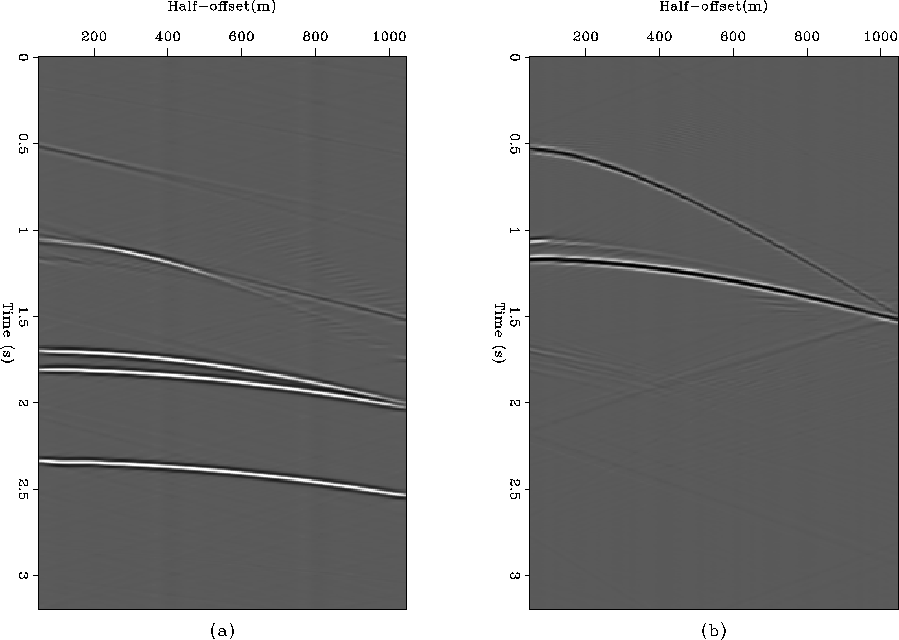 |
Figure 6 Estimated multiples (a) and estimated primaries (b). Some multiples leaked into the estimate of the primaries and some primaries leaked into the estimate of the multiples.
![[*]](http://sepwww.stanford.edu/latex2html/cross_ref_motif.gif) . Clearly,
the kinematics of the reflections have been recovered fairly well, except
at the large offsets of the water-bottom primary for which the subsurface
offset sampling in the SODCIGs was a little coarse given its steep moveout
as seen in Figure
. Clearly,
the kinematics of the reflections have been recovered fairly well, except
at the large offsets of the water-bottom primary for which the subsurface
offset sampling in the SODCIGs was a little coarse given its steep moveout
as seen in Figure ![[*]](http://sepwww.stanford.edu/latex2html/cross_ref_motif.gif) (below -400 m). In the next subsection
I show that adaptive subtraction recovers these amplitudes very well.
(below -400 m). In the next subsection
I show that adaptive subtraction recovers these amplitudes very well.
 |
Figure ![[*]](http://sepwww.stanford.edu/latex2html/cross_ref_motif.gif) shows the
result of applying adjoint migration to the muted SODCIGs. The left panel
corresponds to the estimated multiples whereas the right panel corresponds
to the estimated primaries. Obviously, some primary energy remains in the
estimated multiples and some energy from the water-bottom primary remain
in the estimated primaries.
shows the
result of applying adjoint migration to the muted SODCIGs. The left panel
corresponds to the estimated multiples whereas the right panel corresponds
to the estimated primaries. Obviously, some primary energy remains in the
estimated multiples and some energy from the water-bottom primary remain
in the estimated primaries.